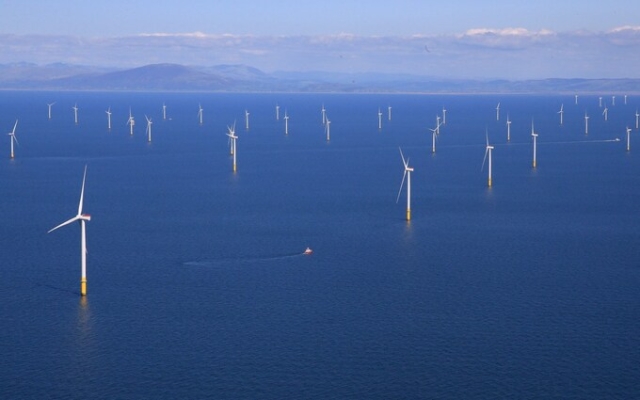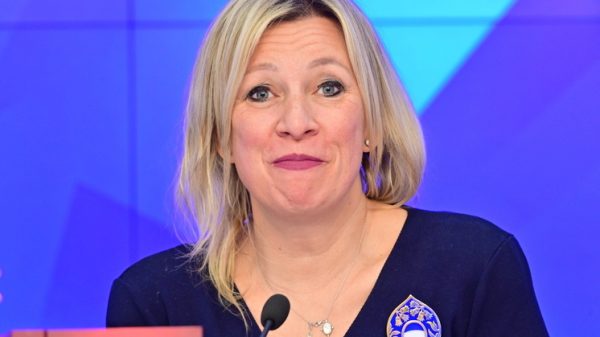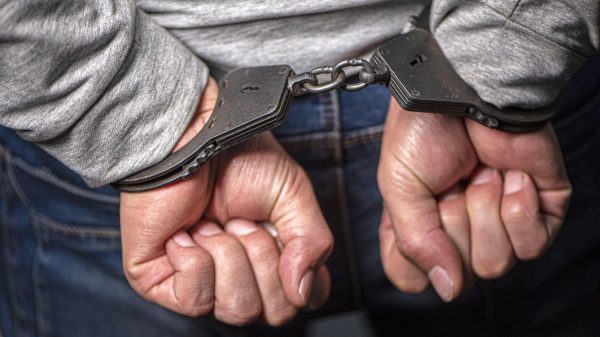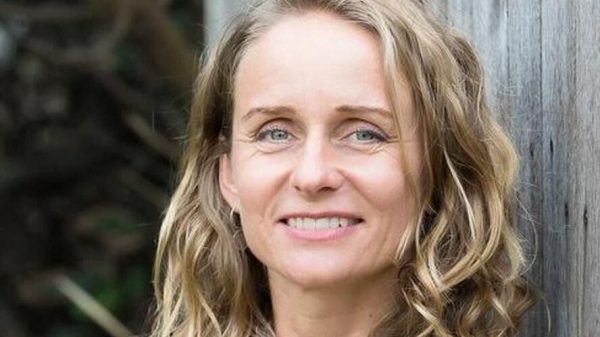 Renewable energy projects must wait a decade or more to connect to the grid. Photo: Phil Noble/REUTERS
Renewable energy projects must wait a decade or more to connect to the grid. Photo: Phil Noble/REUTERS
Around 60 miles off the east coast, wind turbines more than twice the height of Big Ben are ready to start up within weeks.
Dogger Bank, the world's largest wind farm capable of powering 6 million homes, will finally come online, eight years after it was first granted planning permission.
p>But across the UK hundreds more projects are being seen as vital. helping the government achieve its net zero ambition is currently being held back by bureaucracy and delays.
In a speech on Wednesday, Rishi Sunak promised to speed up the construction of solar farms, wind farms and battery storage by speeding up the process of connecting them to the grid.
Energy experts say the Prime Minister is right to focus on the problem of grid connections , which may be little known to households but is a major concern for energy companies.
Put simply, businesses are scrambling to build a huge number of billion-pound renewable energy projects across the country.
In total, about 300 gigawatts of projects are currently planned — compared with 65 gigawatts of schemes connected today.
But developers are currently being told they must wait a decade or more to connect them to the grid.
This even applies to projects that may be ready next year.
“At the moment, the network infrastructure is in a sclerotic state,” complains one energy executive.
«You can't expect investors to put £30m aside and then sit and wait over ten years before using it.
«There is no world in which it would be acceptable to have to wait 14 years before connecting.»
UK Electricity Balance
The delays have been blamed on National Grid, which owns and operates the electricity transmission system. However, this is subject to arcane rules controlled by Ofgem, which control the queuing and scheduling system for network connections.
Currently, these queues operate on a first-come, first-served basis. This means that projects that are speculative and may never come to fruition are given priority over others whose funding and design mean they can be completed quickly.
>
Changing this system is also slow process due to the highly regulated nature of National Grid's business.
But on Wednesday Sunak highlighted grid connections as a top priority, vowing to end first-come-first-serve and speed up projects.
He said: “Right now it could take 14 years. build a new network infrastructure. There are enough projects waiting to be connected to supply more than half of our future electricity needs.
“We will develop the UK's first spatial plan for this infrastructure to give confidence to the industry and give every community a voice.
“We will speed up planning for the most nationally significant projects and end the 'first come, first served' approach to connectivity to networks, raising the bar for entry into the queue — and making sure those who are ready first get connected first.”
Sunak's promises will be widely welcomed.
The National Grid has already promised reforms that it says will allow advanced projects — such as those with planning permission — to outpace speculative schemes that have little chance of success.
Energy regulator Ofgem insists to be more transparent and share queue data with other industry colleagues.
A plan to overhaul the Grid queuing system was tabled earlier this year and subsequent Grid proposals are being considered by Ofgem.
The watchdog was expected to publish a decision this month, but industry insiders were told this week that it had been delayed.
However, the backlog of energy projects that require grid connections is actually a historical problem, o which Ofgem first warned about back in 2010.
When the national grid was built in the 1930s to 1960s, there was a demand for new connections. from a small number of large fossil fuel generators.
The result is a network designed to connect very large power plants to distant cities, with most wires running roughly north to south.
The move toward net zero has changed that thinking. . The government's net zero concept is to create many smaller generators.
Larger ones, such as onshore wind farms and solar power plants, can have output similar to a small power plant, but smaller ones can range from farmers with anaerobic digesters to homeowners with solar panels on their roofs. They all want to be connected to the local or national grid.
This means the National Grid has been inundated with thousands of connection requests — although few of the projects have been built and many will never be built. .
If they were all built, they would produce about 300 gigawatts of electricity — about five times more than the country currently needs. A third of these connection requests came in just the last six months.
However, National Grid is not allowed to choose between them. Rules set by energy regulator Ofgem state that connections must be offered on a first-come, first-served basis.
This means there are hundreds of applications waiting to be processed, many of which are speculative projects, adding up to a 13-year wait waiting for connection.
0107 national network
Among the many projects queuing up to connect to the grid is a proposed battery storage site on the outskirts of Heysham, Lancashire.
The 200 megawatt scheme proposed by Kona Energy would aim to tap excess electricity generated by offshore wind farms during periods of low demand and then return it to the grid during peak hours .
Offshore wind farms are currently paid millions of pounds to reduce output when their energy has nowhere to go because the grid is overloaded.
Andy Willis, founder and chief executive of Kona, says his company's scheme will help harness this excess electricity and could be ready as early as next year, but the grid connection date is set to 2026. < /p>
Others will have to wait even longer. Octopus Energy has three solar farms in County Durham, Lincolnshire and another near Birmingham, and has been told it will have to wait 13 years to connect them.
The company, which supplies gas and electricity to five million UK homes, is also considering 20,000 requests from communities seeking to build small wind farms with one or two turbines, which are likely to face similar delays.
Greg Jackson , CEO of Octopus, called for complete reform of the energy project planning system.
Kona Energy's Willis says unlocking the system will release huge amounts of pent-up investment across the UK, while significantly increasing the amount of green energy available on the grid.
“There are a significant number of projects like ours that could would start generating power within a year if they could connect to the grid,” he adds.
“But this is still the main obstacle for everyone at the moment.”
The National Network insists it wants reform too.
“The legacy first-in, first-serve process creates a strong incentive for projects to secure a place in the connection pipeline, regardless of the viability of their project,” says the spokesperson.
“This leads to a huge increase in the number of applications and that’s it.” this is causing delays for customers who are ready to connect.»
Earlier this year, Nick Winser, the Electricity Network Commissioner, said the time it takes to expand the network and add connections threatens to undermine the UK's ambition to reach net zero. net profit.
“The current process is complex and involves many different aspects… Every part of the process must and can be significantly improved,” he said.
The same problems exist offshore, where there are currently 43 wind farms provide up to a third of the UK's electricity on windy days. It's a success story so far, but every wind farm needs to be connected to the grid.
And because they are mainly located off the UK's east coast, these cables need to be laid from east to west.
Such problems have prompted complaints from wind farm companies such as Orsted in December last year. he faced a 12-year wait for connection. He warned the UK would miss its offshore wind targets unless the connection process was accelerated.
A spokesman for RenewableUK, the wind industry trade body, said: “Grid connection delays are holding back £15 billion. investing only in offshore wind during this decade, at the very time when we need to improve our energy security as quickly as possible.»
As Sunak faces backlash over his decision to cut power over flagship policy zero emissions, he can only hope that his proposal to encourage private sector investment in green energy will prove his doubters wrong.




















































Свежие комментарии